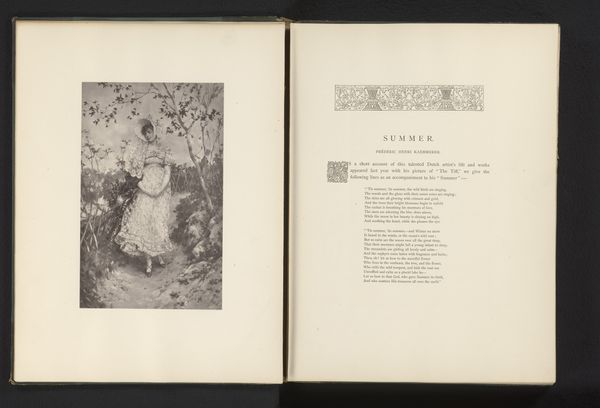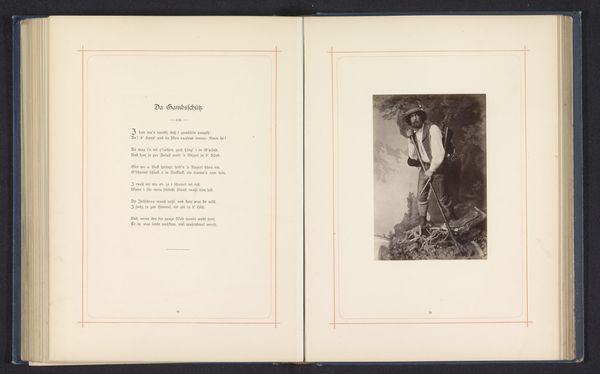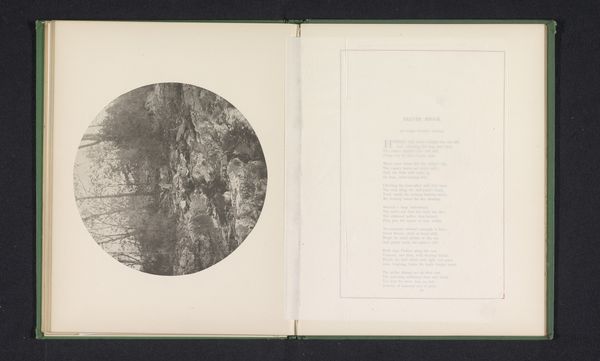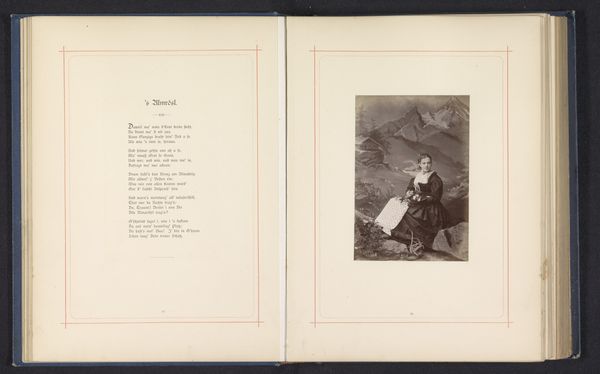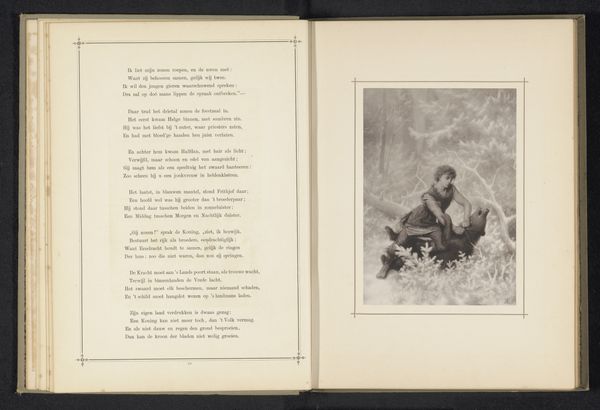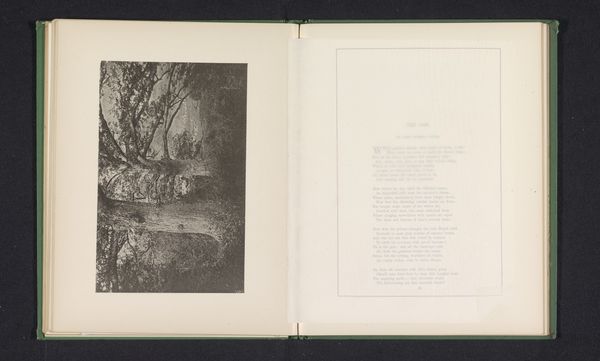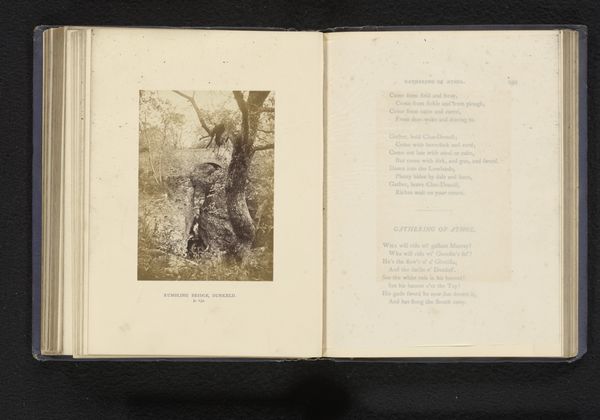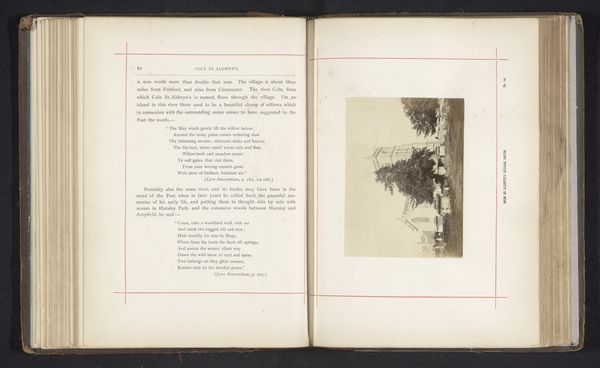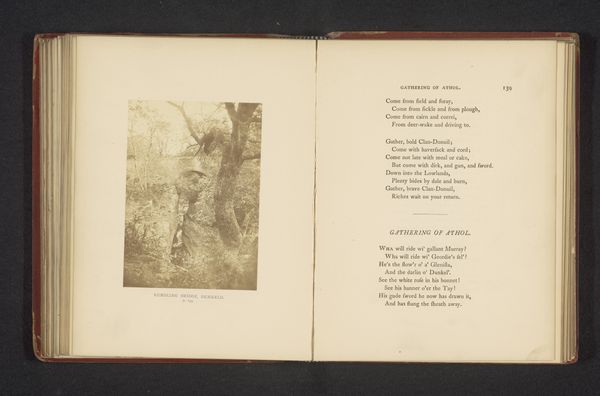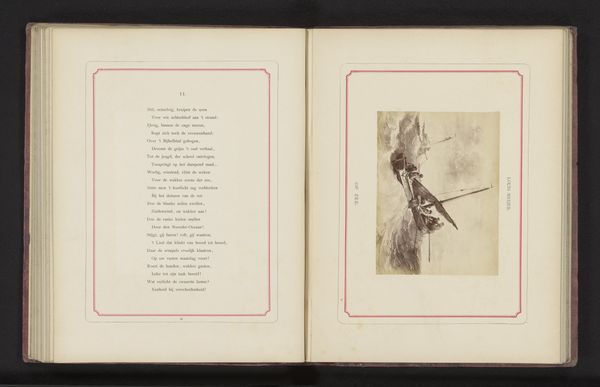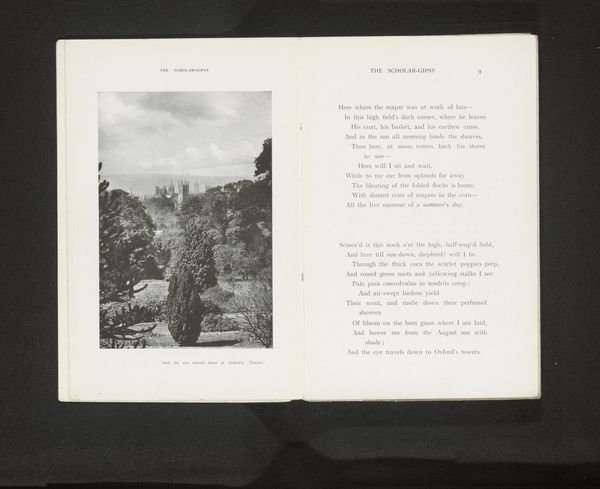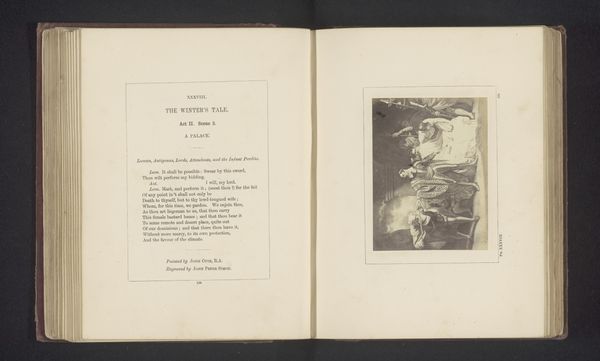
Reproductie van een schilderij van een jonge vrouw in een winterlandschap door Frederik Hendrik Kaemmerer before 1879
0:00
0:00
painting, print
#
portrait
#
painting
# print
#
impressionism
#
landscape
#
winter
#
genre-painting
Dimensions: height 232 mm, width 147 mm
Copyright: Rijks Museum: Open Domain
Editor: This is a reproduction of a painting by Frederik Hendrik Kaemmerer, dating from before 1879, titled 'Reproduction of a painting of a young woman in a winter landscape'. The subdued tones create a melancholic atmosphere; it's as if she's lost in thought while walking through the snow. What catches your eye when you look at it? Curator: Well, immediately I’m thinking about the context in which a work like this would circulate. That this painting is reproduced in what appears to be a book, possibly of poetry, speaks to how art was consumed and shared. Not as a singular object for the elite, but also as part of a broader cultural experience for a growing middle class. How does that reproduction change the experience, versus seeing the original painting? Editor: That's fascinating, the reproduction turning it into a more accessible artwork. I wonder if that was a conscious decision on the part of the artist, or the publisher? Curator: Probably a collaboration, or at least a welcomed opportunity. By reproducing his work, Kaemmerer gained wider recognition and his art was embedded within literature, connecting visual and written culture. Look at the detail lost and gained in the transfer to print; consider its original exhibition context too - where might one have encountered the original painting, and who would have seen it? Editor: So, in effect, it changes the meaning of the art, adding social layers beyond the image itself. I guess that reminds me that the museum today plays a specific role in displaying, contextualizing, and even legitimizing certain artworks above others. Thanks, that's given me a lot to consider! Curator: And hopefully challenged the way you see reproductions and their cultural role beyond simple imitation. I certainly found it rewarding to consider how these pieces operate within a specific social and historical framework.
Comments
No comments
Be the first to comment and join the conversation on the ultimate creative platform.
